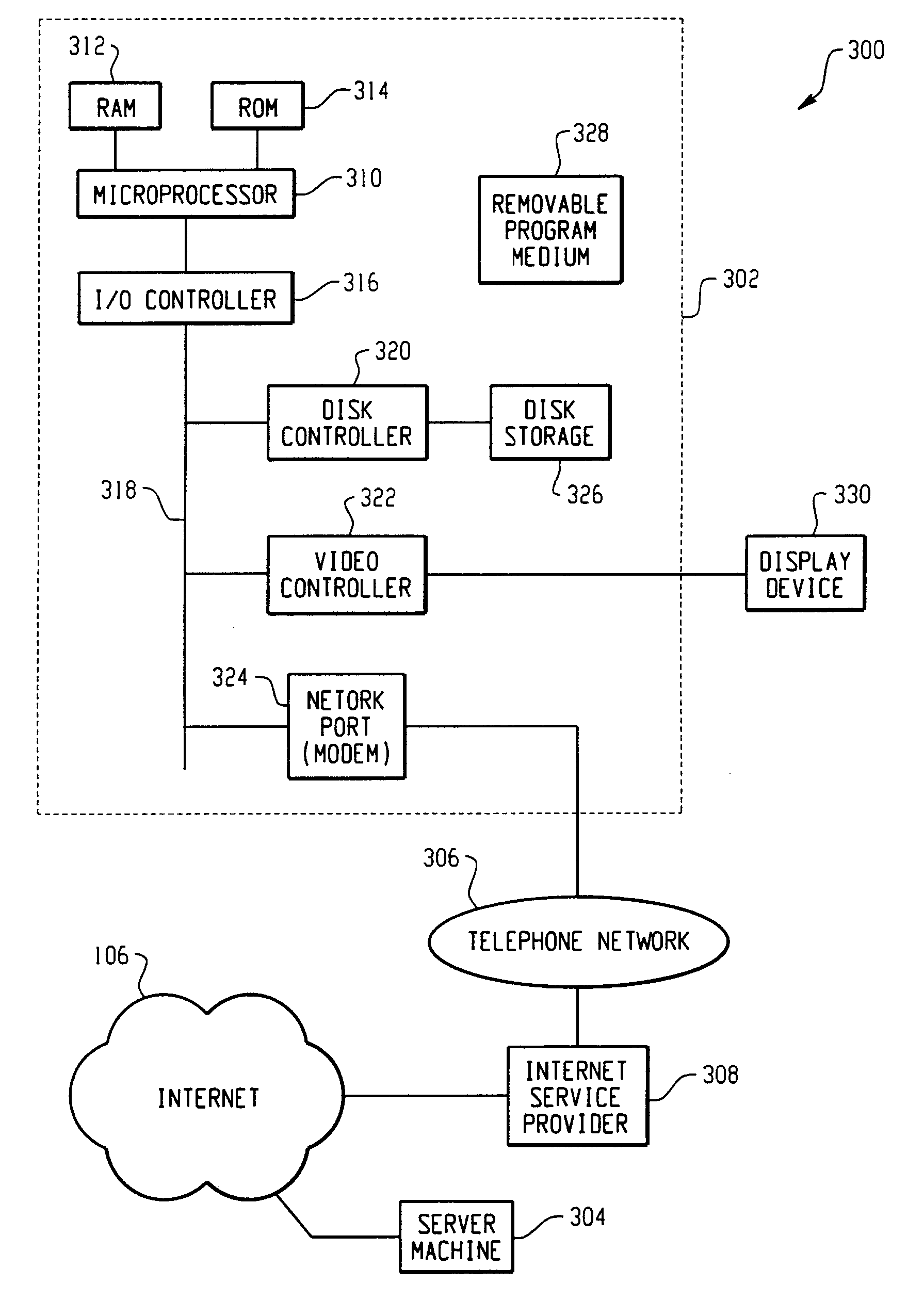Method and system for transmitting graphical images
a graphical image and image technology, applied in the field of graphical images, can solve the problems of bandwidth constraints, inability to transmit graphical image files, and inability to meet user requirements, etc., and achieve the effect of reducing the average time it takes to down-load a graphical image file to a user"s computer, and reducing the cost of graphical image transmission
- Summary
- Abstract
- Description
- Claims
- Application Information
AI Technical Summary
Benefits of technology
Problems solved by technology
Method used
Image
Examples
Embodiment Construction
[0034] Embodiments of the invention are discussed below with reference to the drawings. However, those skilled in the art will readily appreciate that the detailed description given herein with respect to these figures is for explanatory purposes as the invention extends beyond these limited embodiments.
[0035] FIG. 1A is a basic block diagram of a communications system 100 according to an embodiment of the invention. The communications system 100 includes a server 102 and a client 104. Images are stored on the server 102 and each image typically has a predetermined physical size and resolution that lead to a total image size. Each such image is stored on the server 102 as an image file. The client 104 sends a request for an image over a link 106 to the server 102. The server 102 then in turn sends an appropriate amount of data for the corresponding image file to the client 104 over a link 108.
[0036] FIG. 1B is a detailed block diagram of the communications system 100 illustrated in ...
PUM
 Login to View More
Login to View More Abstract
Description
Claims
Application Information
 Login to View More
Login to View More - R&D
- Intellectual Property
- Life Sciences
- Materials
- Tech Scout
- Unparalleled Data Quality
- Higher Quality Content
- 60% Fewer Hallucinations
Browse by: Latest US Patents, China's latest patents, Technical Efficacy Thesaurus, Application Domain, Technology Topic, Popular Technical Reports.
© 2025 PatSnap. All rights reserved.Legal|Privacy policy|Modern Slavery Act Transparency Statement|Sitemap|About US| Contact US: help@patsnap.com



